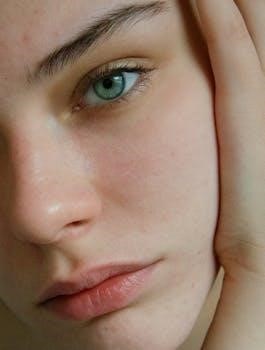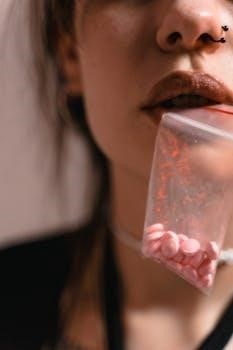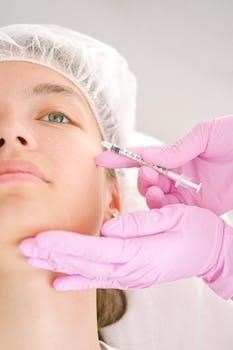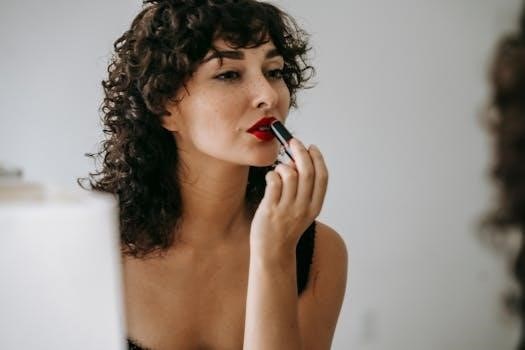The field of aesthetic medicine has seen a rise in lip augmentation using injectable fillers like hyaluronic acid. These non-surgical methods meticulously administer fillers to modify lip structure and enhance volume, offering varied aesthetic outcomes.
What Are Lip Fillers?
Lip fillers, also known as dermal fillers, are injectable substances primarily used to enhance the volume and shape of the lips. These fillers are meticulously administered through injections, targeting specific areas of the lips to achieve desired aesthetic outcomes. Hyaluronic acid (HA) is a commonly used substance, known for its hydrophilic properties, meaning it attracts and retains water, which contributes to the plumping effect. The procedure is a non-surgical method designed to provide a fuller, more defined appearance to the lips. Unlike other techniques, lip fillers allow for precise control over the amount of volume added and the resulting shape of the lips, allowing for customized treatments tailored to individual needs. The use of lip fillers has become increasingly popular due to their non-invasive nature and the ability to provide immediate results. These fillers can address concerns like thin lips, asymmetry, and loss of volume due to aging.

Types of Lip Filler Techniques
Various lip filler techniques exist, each providing unique results, from subtle changes to dramatic enhancements. These methods cater to diverse aesthetic goals, utilizing different injection approaches and filler placements.
Lip Volume Enhancement
Lip volume enhancement is a common technique in lip filler procedures, primarily focusing on adding fullness to thin lips. This method aims to increase the overall size of the lips, providing a more plump and youthful appearance. The approach typically involves injecting filler into the body of the lip, aiming to create a balanced and natural-looking augmentation. Practitioners often use a linear threading technique or microdroplets, depending on the desired outcome and the patient’s individual lip anatomy. This technique is versatile and can be tailored to achieve varying degrees of volume, catering to different preferences. The goal is to enhance the lip’s natural shape while adding desired fullness, resulting in a more voluminous and defined pout. The choice of filler and injection depth are crucial in achieving the optimal results.
Russian Lip Technique
The Russian lip technique, known for creating a doll-like appearance, focuses on enhancing the center of the lips while lifting them upwards. This method aims to add volume primarily to the central lip area, creating a pronounced Cupid’s bow and a fuller middle section. Unlike techniques that focus on outward projection, the Russian method aims to lift the lips vertically, resulting in a heart-shaped effect. This technique typically involves using a series of vertical injections, carefully placed to achieve the desired lift and central fullness. While popular, it requires precise injection skills and an understanding of lip anatomy to avoid an overfilled or unnatural look. The goal is to create a defined Cupid’s bow and a plump center, resulting in a distinctively shaped lip.
Lip Tenting Technique
The lip tenting technique involves a series of injections into the body of the lip, rather than along the vermillion border. This method creates a tent-like structure within the lip tissues, using nearly vertical injections from multiple points. The goal is to lift and add volume by injecting filler into the substance of the lip itself, rather than just the edges. This approach can provide a subtle but noticeable increase in lip fullness and is often preferred for those seeking a more natural-looking enhancement. By injecting vertically, the technique aims to project the lip forward, creating a gentle, rounded shape. It’s a method that requires careful placement of injections to ensure even distribution and a smooth, natural appearance; The technique is ideal for adding volume without dramatically altering the lip’s natural shape.
Microdroplet Technique
The microdroplet technique is characterized by the injection of very small amounts of filler at multiple points along the lips. This method offers a subtle enhancement and is particularly useful for smoothing out fine lines around the lips. By using tiny droplets of filler, the practitioner can achieve a very natural and gradual increase in volume without creating an overfilled or artificial look. The microdroplet technique is ideal for patients who desire a delicate improvement or wish to address minor imperfections. It requires precision and a good understanding of lip anatomy to ensure even distribution and avoid any lumps or irregularities. This technique prioritizes subtlety and is perfect for those seeking a refined and understated result. The precise placement and minimal volume make it an excellent choice for a natural-looking enhancement.
Fan Technique
The fan technique involves injecting filler in a fan-shaped pattern from a single entry point in the lip. This method helps to evenly distribute the filler across the lip area, providing a balanced and natural-looking enhancement. The technique allows for a wider spread of filler with fewer injection points, reducing the risk of localized swelling or bruising. By injecting from a single entry, the practitioner can fan out the filler, creating a smooth and uniform volume increase. This technique is especially useful for addressing areas that require a subtle lift or correction of asymmetry. The fan technique is a versatile option for achieving a harmonious and well-proportioned lip augmentation, catering to various aesthetic goals. It allows for greater control over the final shape and volume, making it a popular choice among experienced injectors seeking seamless results.

Essential Injection Techniques
Mastering lip filler injections requires understanding facial anatomy and precise techniques. Fundamental methods include choosing between cannula or needle, and the linear threading technique for predictable results.
Cannula vs Needle
When performing lip filler injections, practitioners must choose between using a cannula or a needle. Needles are traditionally used for precise, targeted filler placement. They allow for controlled injections, but can increase the risk of bruising or vascular complications due to their sharp point. Cannulas, on the other hand, are blunt-tipped and flexible, reducing the likelihood of vascular injury and bruising. They require a small entry point made with a needle, but they can then be maneuvered through tissues with less trauma. While cannulas offer a safer approach, they may be more challenging for beginners to control the precise depth and placement of the filler. Many injectors achieve beautiful results using only needles and do not transition to cannulas. The choice between cannula and needle depends on the injector’s experience, comfort level, and the desired outcome for the patient.
Linear Threading Technique
The linear threading technique is a fundamental approach in lip filler injections, particularly favored by beginner injectors due to its safety and predictable outcomes. This method involves inserting a needle or cannula parallel to the vermillion border of the lips, depositing filler in a smooth, linear fashion. The filler is injected as the needle is slowly withdrawn, creating a thread of product that enhances lip definition and volume. This technique is often referred to as the classic lip filler method because of its straightforward application. The even distribution of filler achieved through linear threading helps prevent lumps or unevenness. It is essential to maintain consistent pressure on the syringe and to use a bimanual technique for stability. The non-injecting hand should stabilize the lip, allowing the injector to feel the depth of the needle and ensure accurate filler placement. This technique provides a reliable way to achieve enhanced lip definition and volume.

Injection Depth and Safety
Proper injection depth is crucial for achieving natural results and minimizing complications. Safety considerations include understanding vascular anatomy and using techniques to reduce risks, such as avoiding deep injections.
Ideal Injection Depth
When injecting lip fillers, achieving the correct depth is paramount for both safety and optimal results. The ideal target is the deep dermal or immediate subdermal plane, situated at the junction of the dermis and hypodermis. This depth is often described as being superficial, avoiding deeper structures like blood vessels. Imagine it like a blanket⁚ you should be able to slightly make out the needle’s contour without seeing its color. Injecting too superficially can cause visible filler or migration, while going too deep risks vascular complications. It requires a delicate balance, blending knowledge of lip anatomy with precise technique. This “blanket” depth ensures the filler is placed perfectly for safe and effective lip enhancement, requiring a skilled injector to consistently achieve.
Safety Considerations
Safety is paramount when performing lip filler procedures, and while generally safe, complications can occur. A key safety measure is to never inject deeper than 3mm into the lip tissue, this minimizes the risk of damaging vasculature. Proper training and technique, such as the linear threading method, can help reduce these risks. Supporting the tissue with your non-injecting hand, reducing the chance of vascular occlusion is important. While advanced techniques like compressing the superior labial artery offer additional safety, beginner injectors should focus on proper tissue support. It is important to remember that trendy techniques do not always equal safe techniques. Always prioritize your patient’s safety and understand the risks that can occur with lip filler injections.
Lip Filler Tools
For lip filler treatments, both needles and cannulas are used. Beginners often start with needles due to their straightforward use. Soft, hyaluronic-acid based fillers are preferred for lip augmentation procedures.
Needle and Cannula Choices
When performing lip filler injections, practitioners have the choice between using needles and cannulas, each offering distinct advantages. Needles are typically favored by beginners due to their directness and ease of use, allowing for precise filler placement with each injection. They are particularly effective for creating defined lines and contours. Cannulas, on the other hand, are blunt-tipped instruments that are inserted through a small entry point and then maneuvered under the skin. Cannulas reduce the risk of vascular complications and are often preferred by more experienced injectors. The choice between a needle and a cannula depends on the injector’s skill level, the desired outcome, and the specific area of the lip being treated. Ultimately, both tools can achieve beautiful results when used correctly, and some injectors may choose to stick with needles, as they can be just as effective, depending on the practitioner’s skill level.

Achieving Natural Results
Strategic filler placement is key to achieving natural-looking lip enhancement. Understanding lip anatomy and using precise injection techniques are crucial for subtle, balanced results.
Strategic Filler Placement
Achieving a natural-looking outcome with lip fillers relies heavily on strategic filler placement. It’s not just about adding volume but understanding where and how to inject to enhance the existing lip structure. Careful consideration of the patient’s unique lip shape and facial features is paramount. A skilled injector will analyze the vermillion border, the Cupid’s bow, and the overall lip balance before beginning the procedure. The goal is to augment the lips in a way that appears harmonious with the rest of the face. This often involves injecting filler in specific areas to create subtle lifts, define the lip line, or add a gentle plumpness without looking overdone. The injector must also consider how the filler will settle and integrate with the surrounding tissue over time. Ultimately, strategic placement is about achieving a result that enhances the patient’s natural beauty, rather than creating an artificial look.
